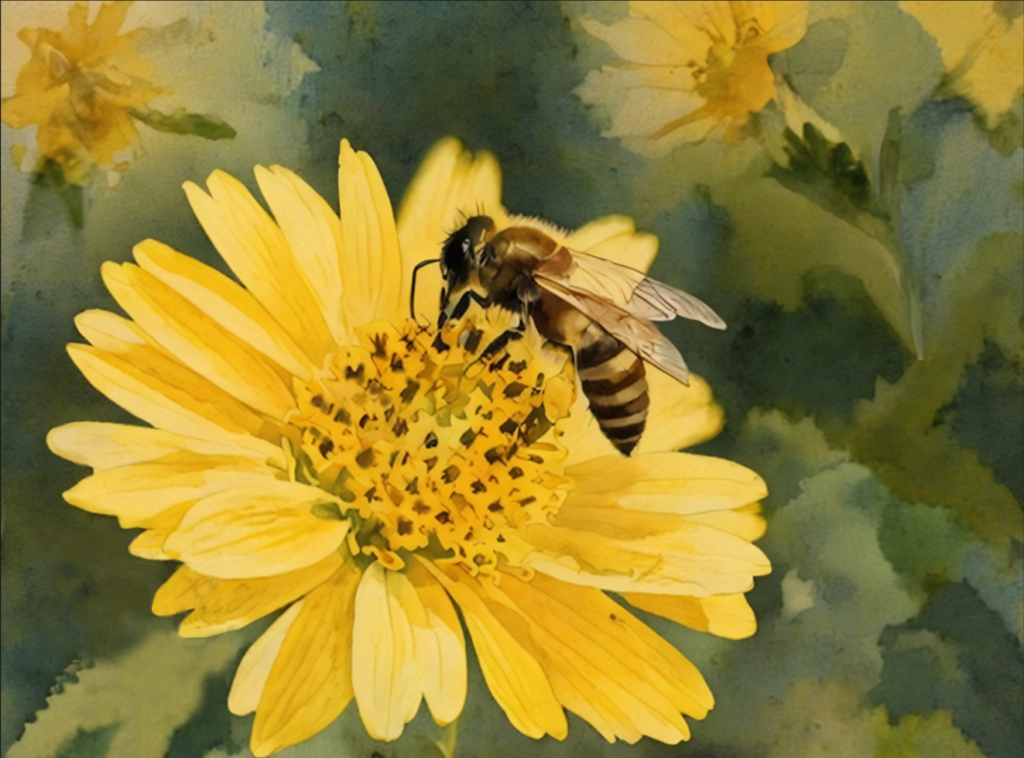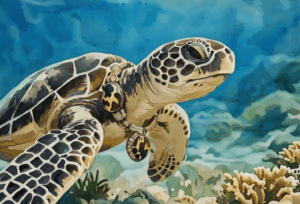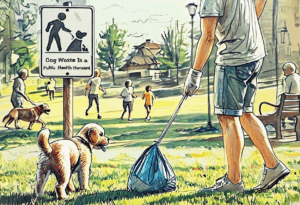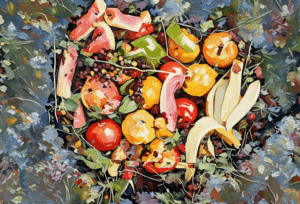
Everyone knows that if they encounter poison ivy not to touch it. But that isn’t always easy. Poison ivy can spread as fast as a wildfire if its growth is left unchecked, and, worst of all, it can look awfully similar to other plants we know and love: raspberry plants. Impostors like these are more common than you think; the tricky part is being able to spot them.
The COVID-19 pandemic, beginning around 2020, led to the blossoming of 18.3 million new gardeners. Even now, in 2024, 55% of Americans continue to grow gardens. However, while planting flowers and trees around your home may sound simple, you must always keep a close eye out for impostors: invasive plants.
Invasive plants are plants that originated in an area outside of your own that are brought into it and cultivated, whereas native plants, what you should be planting instead, are plants that originated in your area and continue to be cultivated there.
Growing plants non-native to your area not only has detrimental side effects on other flora and fauna, but could become harmful to humans as well.
Invasive plants, once rooted in the soil, compete for space and sunlight with native plants. When you water your plants, invasive plants can easily absorb most of it, leaving your remaining native plants deprived of their most essential resource for survival. These invasives will then grow at rapid rates–around 100 times quicker than typical plants–and end up as unintentional umbrellas, covering native plants so they become incapable of absorbing any sunlight and undergo photosynthesis.
These plants are also a significant cause of animal endangerment, causing 42% of endangered species, such as the rusty patched bee, to decline. Bees rely on flowering plants for survival, consuming their nectar and pollen as sources of nourishment, but with the pervasive growth of invasives choking them out, or even infecting them with its own spreading bacteria or fungi, their food supplies dwindle.
Like bees, humans also depend upon sources of food to survive. Some of the excess pollen bees collect is spread to other flowering natives they encounter, which allows these plants to utilize it to create new seeds, or even fruit, such as the cranberries you use in your Thanksgiving sauce. Aside from something to decorate your dinner table, fruits are rich in essential vitamins, minerals, and fiber. Those cranberries are full of vitamin C, which helps eliminate nasty dead skin, and vitamin K1, or phylloquinone, which helps maintain proper blood clotting.
Just as native plants are highly beneficial for gardeners to cultivate, growing invasives could endanger the individual maintaining it in their garden. Many have encountered Brazilian Pepper trees all across the United States, often using them as Christmas trees complete with their bright red berries, but those with sensitive skin could experience severe inflammation if they come into contact with its leaves. Some could even become susceptible to allergic contact dermatitis, or ACD.
While the damaging impacts of invasive plant species are well-known, they’re often sold at nurseries or other stores that sell plants. For example, lantana with flame-colored petals is often sold at local shops, but it’s actually invasive in many parts of the United States. Don’t let its beauty fool you!
Researching the types of plants you intend to grow in your garden is crucial, so you’re not sowing danger into your garden. A simple Google search will save native plants, animal species, and yourself: “Is [name of the plant species] invasive in [the name of the state you’re living in], United States?”.
Keep your green thumb green by practicing responsible gardening!
Works Cited
Arnarson, Atli. “Cranberries 101. Nutrition Facts and Health Benefits.” Healthline,
https://www.healthline.com/nutrition/foods/cranberries#plant-compounds. Accessed 1
December 2024.
Bennett, Paige. “Invasive Species Expanding Their Ranges 100x Faster Than Native Species,
Study Finds.” EcoWatch, 25 June 2024,
https://www.ecowatch.com/invasive-species-range-native-competition-climate-change.
Accessed 7 August 2024.
Licavoli, Katie. “Poison Ivy Identification Guide.” Greenbelly,
https://www.greenbelly.co/pages/how-to-identify-poison-ivy. Accessed 1 December
2024.
Marblehead Conservancy Inc. “Poison Ivy.” Marblehead Conservancy Inc,
text=Poison%20ivy%20(Toxicondendron%20radicans)%20is,one%20characteristic%20o
f%20an%20invasive. Accessed 1 December 2024.
Marinelli, Janet. “Ten American Native Plants You Can Eat.” National Wildlife Federation,
https://www.nwf.org/Magazines/National-Wildlife/2013/DecJan/Gardening/Native-Plants
-You-Can-Eat#:~:text=We%20may%20not%20think%20of,among%20the%20true%20A
merican%20originals. Accessed 1 December 2024.
Mayers, Katie. “Gardening Statistics in 2024 (incl. Covid & Millennials).” Garden Pals, 15
January 2024, https://gardenpals.com/gardening-statistics/. Accessed 7 August 2024.
McGovern, Thomas W, and Waggett, Stephanie M. “Brazilian Peppertree: Watch Out for This
Lesser-Known Relative of Poison Ivy.” MDedge,
https://www.mdedge.com/dermatology/article/269987/contact-dermatitis/brazilian-pepper
tree-watch-out-lesser-known-relative. Accessed 1 December 2024.National Geographic.
National Park Service. “Invasive Plant Spotlight: Brazilian Pepper.” National Park Service,
https://www.nps.gov/articles/spotlight_brazillian_pepper.htm#:~:text=In%20the%20Unit
ed%20States%2C%20Brazilian,serious%20weed%20in%20South%20Africa. Accessed 1
December 2024.
National Wildlife Federation. “Bees.” National Wildlife Federation,
https://www.nwf.org/Educational-Resources/Wildlife-Guide/Invertebrates/Bees.
Accessed 7 August 2024.
“Photosynthesis.” National Geographic Education, 21 June 2024,
https://education.nationalgeographic.org/resource/photosynthesis/. Accessed 7 August
2024.
Pollinator Partnership. “About Pollinators | Pollinator.org.” Pollinator Partnership,
https://www.pollinator.org/pollinators. Accessed 7 August 2024.
Pollinator Partnership. “North American Pollinator Protection Campaign – INVASIVE
SPECIES.” Pollinator Partnership,
https://www.pollinator.org/pollinator.org/assets/generalFiles/NAPPC-Invasive-Species-Fa
ct-Sheet.pdf. Accessed 7 August 2024.
University of Arizona. “Discovering the origins of invasive Lantana.” University of Arizona
Foundation, https://crowdfund.arizona.edu/project/5923. Accessed 1 December 2024.
USDA Forest Service. “Wildflowers – Invasive Plants.” USDA Forest Service,
https://www.fs.usda.gov/wildflowers/invasives/index.shtml. Accessed 7 August 2024.
USDA National Invasive Species Information Center. “Brazilian Peppertree.” USDA,
https://www.invasivespeciesinfo.gov/terrestrial/plants/brazilian-peppertree. Accessed 1
December 2024.
USDA. “The Importance of Pollinators.” USDA,
https://www.usda.gov/peoples-garden/pollinators. Accessed 7 August 2024.
U.S. Fish & Wildlife Service. “Threats to pollinators.” U.S. Fish & Wildlife Service,
https://www.fws.gov/initiative/pollinators/threats. Accessed 1 December 2024.
Slavin, Joanne L, and Lloyd, Beate. “Health Benefits of Fruits and Vegetables.” NIH National
Library of Medicine, https://pmc.ncbi.nlm.nih.gov/articles/PMC3649719/. Accessed 1
December 2024.
The views and opinions expressed are those of the authors and do not necessarily reflect nor represent the Earth Chronicles and its editorial board.




